‘Everyone is an artist. We just need to learn how to see’: Zimbabwe’s My Beautiful Home competition | Global development
A crescent moon hung high in the starry sky above Matopos village in Zimbabwe, while an eagle owl hooted on the thatched roof as Peggy Masuku crawled out of her mud brick home.
It was 4am, the hour before dawn, and two weeks before the competition she had put in every fiber of her being.
My Beautiful Home is a project that seeks to rekindle the ancient art of decorating and beautifying rural homesteads using materials, colors and pigments gathered from the earth. Prizes are practical and useful: shovels, rainwater tanks, three-legged iron pots, day-old chicks, and even a hive and beekeeping course for regional winners.
But as doomsday approached, Masuku spent a sleepless night worrying about what to wear, whether her personal presentation could match the creative effort she put into her home. Then, she says, a message from amadlozi, the ancestors, arrived with clarity: “Peggy, go to the forest.”
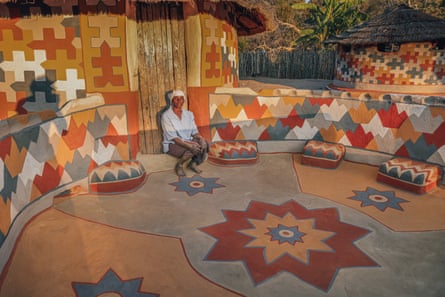
Careful not to wake her husband and children sleeping on their grass mats, Masuku quietly opened the front door. She took a deep breath, inhaled the scent of the mango blossoms, and breathed into the darkness.
As dawn broke over the rugged granite hills around her valley, Masuku walked with eyes to the ground, searching for seeds of that hardy leaf of Africa – the mopani tree. And many of them, to tuck into a royal outfit that would make her the talk of the district.
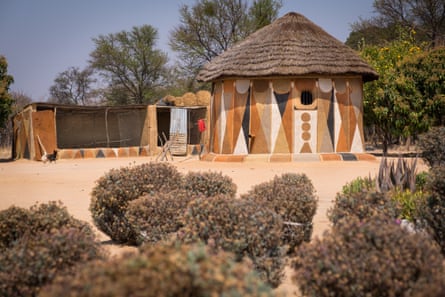

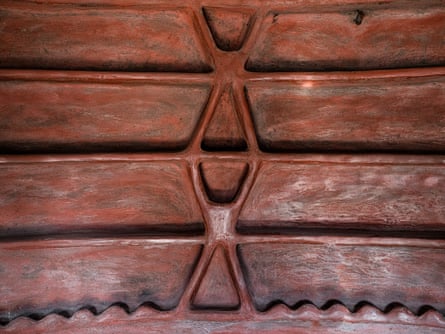
“Everyone is an artist,” says Masuku. “We just have to learn how to see.”
Every fall, as the morning air grows colder and the final harvest of corn and sorghum is stored in the beams of the round clay houses, called rondavels, hundreds of women from all over this region begin to decorate. With pigments mixed from different muds, and an aqueous clay solution applied to the walls, it takes about two to three months to complete a small house inside and out.
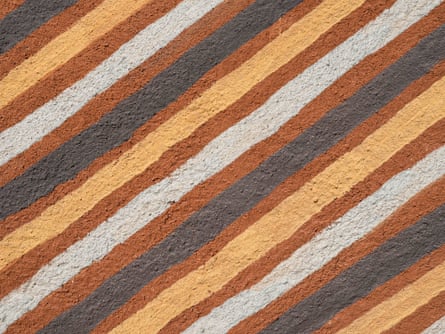



Clockwise from top left: detail of decorative art from Matopos; interior of a rondavel (a round clay house) in the town; the My Beautiful Home competition begins; a bicycle, the main means of transport in Matopos, rests against a decorated wall
The process has deep ancestral roots going back thousands of years. Many art historians believe that the foundations of the Cubism movement are based on the geometric shapes, motifs and textures used in everyday rituals across Africa. Here in the Matobo Hills in southern Zimbabwe, the connections are clearly visible.
At the town’s award ceremony, the singing, cheering and cheering as every single participant collects a prize reflects the great love for this annual art tradition, a living testimony to the African philosophy of Ubuntu: “I am because we are.”
Patience Sarif, a local coordinator, says: “The art aside, this competition is all about community spirit – each woman inspiring and supporting the next. You can see it in their daily life – . Life is hard. They clean and cook, collect water, plow fields, and yet they still find time to work on beautifying their homes and encouraging each other. It is inspiring to see the joy it creates. It’s also really exciting to see how many more young women are involved. Culture is becoming cool again.”



And it is nature that provides the denouement as well as the inspiration for this art movement. When the summer rains arrive in early November, the beautiful motifs and designs, testament to hard work and pride, are washed away in a matter of days.
“When that happens, sometimes I stand in the rain and watch my creation wash away, and I feel sad,” says Masuku. And then she looked up and smiled. “But then we start dreaming about what to do next year.”
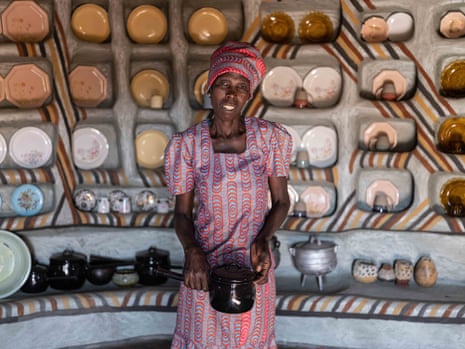
About ARTMUSEM
We promise to tell you the important news in the field of art.
source https://artmusem.com/cbmixwh0dhbzoi8vd3d3lnrozwd1yxjkawfulmnvbs9nbg9iywwtzgv2zwxvcg1lbnqvmjaymi9vy3qvmzevemltymfid2utbxktymvhdxrpznvslwhvbwuty29udgvzdnibaaoc5/
Comments
Post a Comment